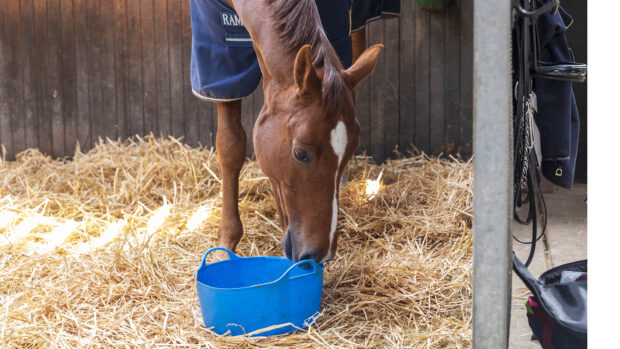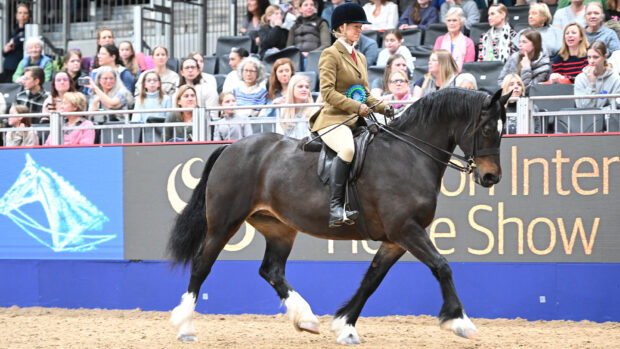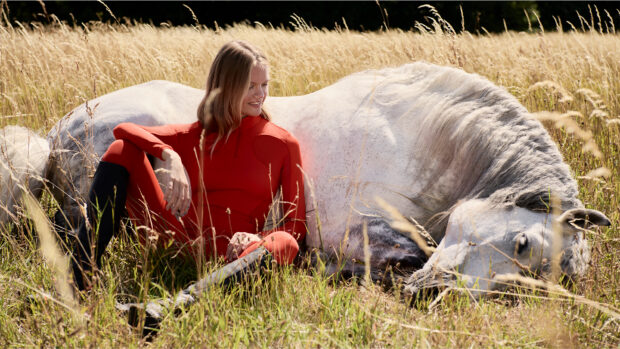The whippet is a swift and agile breed, making it a captivating sight whether they are zooming around the garden or running full-pelt. Although not quite as quick as the larger greyhound, it can make lightning-quick changes of direction, ideal for the small prey that it was originally bred to chase. The whippet is also a delightful family pet, as they are blessed with a gentle and affectionate nature, and are adaptable and fairly low-maintenance.
Dogs of a whippet type were common in medieval times and genetic studies in the 21st century have determined that the whippet originated from the greyhound it so closely resembles. By the 19th century, the whippet was a breed in its own right, used for hunting small game and the extermination of vermin, which the Victorians developed into a gambling sport. Whippet racing later became popular in the mining areas of the North and Wales but also in London and the Midlands, and the breed was nicknamed the “poor man’s racehorse”. Initially whippet racing was more popular than greyhound.
You could be forgiven for thinking that the whippet – together with the diminutive Italian Greyhound – is simply a miniature version of the greyhound. However, the conformation of all three has developed differently. Even accounting for its much larger size, the greyhound is proportionally a more substantial, muscular dog with a deep girth. And while whippets are speedy, the greyhound is king when it comes to pace. The whippet is a “newer” breed, descending from small greyhounds but with some leggy terrier breeds mixed in, and comes in many more variations of colours. While the greyhound was bred to course fast animals such as hare, the whippet was used for smaller prey.

Whippets are naturally athletic sighthounds
Whippet breed: fact file
Kennel Club breed group: hound
Size: small
Daily exercise: an hour
Coat: short, shedding
Colours: 40 standard colours, which vary from the simple black, blue and cream to “fawn black mask white trim” or “red fawn and white particolour”. Brindle variations are common. Merle is the only unacceptable colour.
Lifespan: more than 12 years.
Bark: not vocal; rarely bark – more likely to whine and squeak
History: descended from the greyhound, with some terrier bloodlines, the whippet was established as a breed at the end of the 19th century. Brought into vogue by mining families who use to race them in “rag races”, it is now one of the most popular hound breeds in the UK.
Distinctive features: streamlined and built for speed, combining muscular power with elegance and grace. Very alert, oval eyes.
Temperament: docile, affectionate and even-tempered.
Things to consider: whippets typically enjoy a cave bed, or to sleep underneath a rug, so you may find they enjoy one of the best calming dog beds. They also feel the cold, due to their lack of insulation, so one of the best dog coats – in whippet shape – will be appreciated. They might even thank you for a doggy hot water bottle.
Training: whippets are smart, agile and can be mischievous. They are known for their explosive bursts of energy but are then happy to nap for most of the day.

Whippets: A Practical Guide | Amazon.co.uk
A comprehensive guide, from puppyhood to the senior years, written in a practical and easy-to-follow style, this book provide invaluable, in-depth advice on every aspect of owning a whippet.

Whippets | Amazon.co.uk
This playful and informative book takes a fresh look at the wonderful world of whippets and explains everything you need to know about this energetic breed while celebrating their gentle personalities.
You may also enjoy reading…

Did you know: a hound is a dog, but not all dogs are hounds

Faster than a cheetah? Check out the pace of these 7 speedy dog breeds

21 of the cutest dog breeds to make you coo, smile (and want more dogs…)

Curled up and cosy: the best donut beds for dogs

Cosy up in the colder weather: hot water bottles for dogs

Subscribe to Horse & Hound magazine today – and enjoy unlimited website access all year round
Horse & Hound magazine, out every Thursday, is packed with all the latest news and reports, as well as interviews, specials, nostalgia, vet and training advice. Find how you can enjoy the magazine delivered to your door every week, plus options to upgrade your subscription to access our online service that brings you breaking news and reports as well as other benefits.




